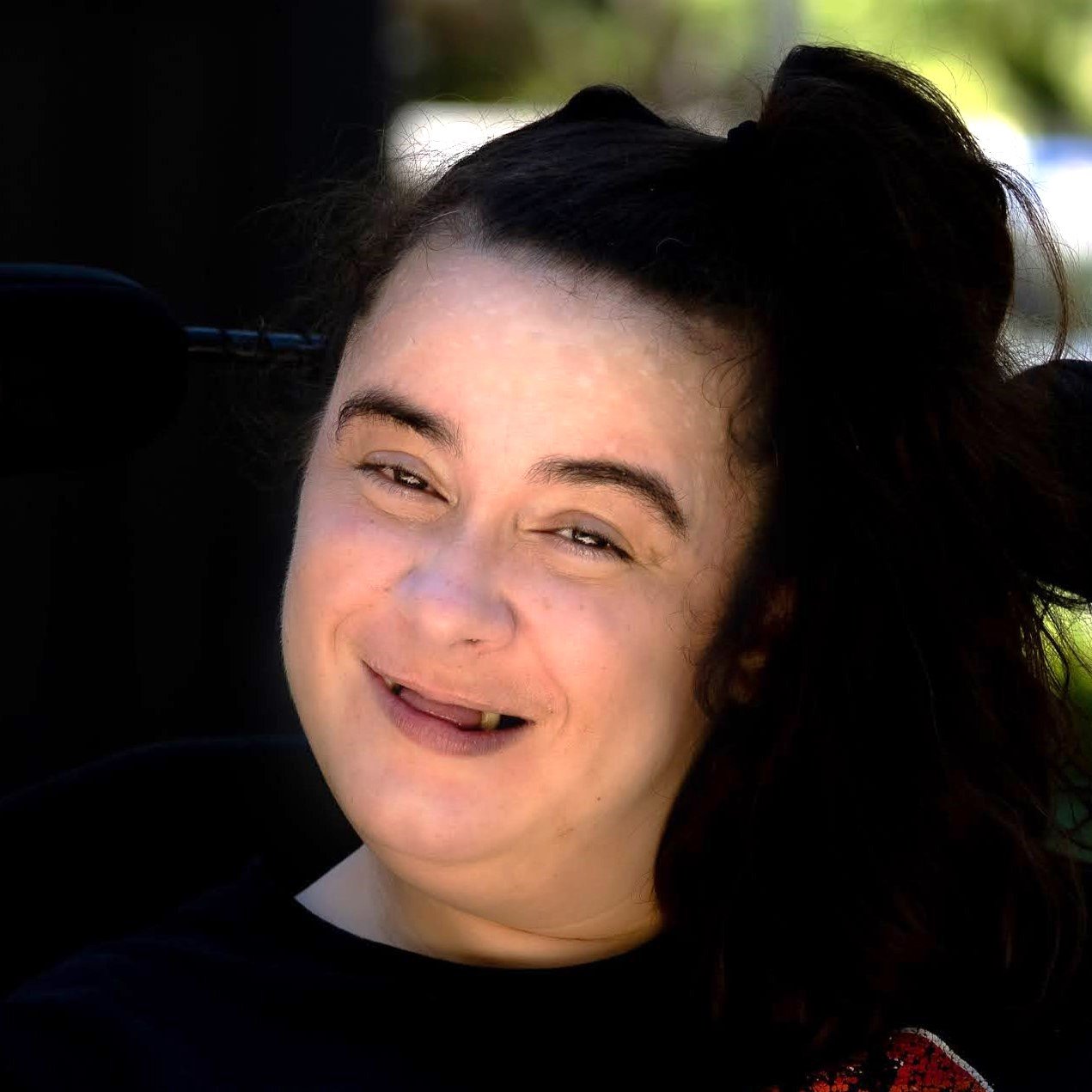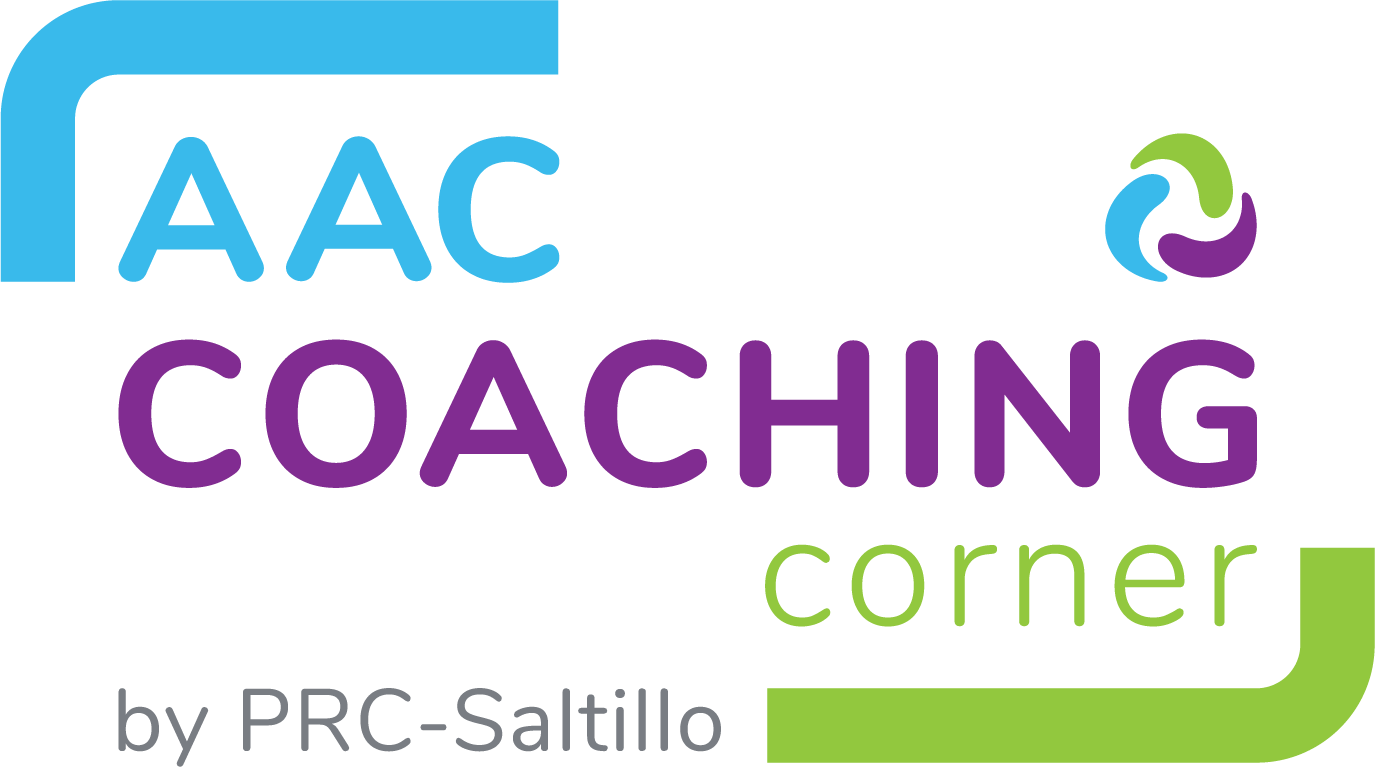
by Stephanie Fassov, PRC-Saltillo Ambassador
The holidays bring together food, family, music, and meaning, but also stress, expectations, and exhaustion. For families supporting someone who communicates on AAC (Augmentative and Alternative Communication), the holiday season can feel like a challenge.
How do we encourage independence while still honoring connection?
How do we make sure every voice, spoken, typed, or symbol-based, is heard at the table?
These questions are at the heart of Relational-Cultural Theory (RCT), a framework created by psychologist Jean Baker Miller and colleagues. RCT teaches that people grow through and toward relationships, not apart from them. Growth doesn’t come from being entirely independent; it comes from meaningful, mutual connection.
This perspective can reshape how we experience the holidays. Instead of focusing on “doing it all alone,” we can create celebrations that foster a sense of belonging and shared joy.
To strengthen the connection, you can help those with AAC needs program holiday vocabulary. For instance, I personally programmed Gingerbread, Ba-Humbug, Scrooge, and the Grinch so that I can discuss popular topics while celebrating Christmas with my family.
Growth Through Connection
Take a moment to think about the people who help you feel most like yourself. Chances are, they’re the ones who listen, support, and remind you that you matter. That’s the connection, and according to RCT, that’s where real growth happens.
During the holidays, it’s easy to believe we have to prove our independence. But what if we measure success in terms of interdependence, how we give and receive support with care and consideration? To strive for interdependence, everyone does what they can independently while fostering healthy connections with one another without becoming dependent on each other.
For individuals who talk on AAC systems, their partners are not just helpers; they are collaborators. Someone who communicates on an AAC system helps plan the menu, directs where decorations are placed, or selects the background music. When we make room for connection in these ways, everyone has a role, and everyone grows. I remember baking the pumpkin pie with my younger sister at our Grandma’s house while sharing how school was going on my speech-generating device. Also, I commented on my Grandma’s favorite holiday TV show: The Peanuts. These shared experiences bring us closer and make us feel included in the holiday festivities.
The Balance of Giving and Receiving
Here’s something to reflect on: How often do we notice what AAC communicators give rather than what they need? Families usually view their family members who communicate on AAC systems as a bag of needs, not as whole, dynamic people. At many holidays with my family of origin, they complained that they had to cook and clean while “taking care of me.” I remember feeling nothing but a burden whenever they complained. So, every time I celebrate holidays with my own family now, I have emotional flashbacks, feeling like a burden, even though I am in a different situation currently.
Mutuality, that give-and-take of relationships, is essential to RCT. Family life can sometimes feel one-sided when one member needs extra assistance. However, AAC communicators can contribute to the holidays in meaningful ways through humor, insight, creativity, and emotional presence.
Think about a time when your AAC communicator made you laugh, comforted someone, or shared their unique opinions. These moments show that mutual care is already happening and you just have to recognize it.
When you find yourself giving more than you receive, the meditation "Giving and Receiving Compassion" will help you balance giving and receiving during the holidays. This meditation can be found: https://self-compassion.org/practices/giving-and-receiving-compassion-2/
Autonomy Within Connection
Autonomy is about having choice and voice, not about doing everything alone. For AAC communicators, autonomy might look like deciding when to join a conversation, how to express an opinion, or when to take a break. I remember several years ago, my uncles, who have extremely conflicting political views, arguing on Christmas. Still, by using my Accent, I calmed them down, saying that everyone’s different and multiple realities are valid.
You can support this by asking open-ended, respectful questions like:
- “Do you want to share your message now or later?”
- “Would you like help finding words, or would you rather do it yourself?”
Moments like these communicate, I trust you to know what you need.
Autonomy and connection don’t compete, but they strengthen each other.
The Power of Voice
Pause for a second and picture a typical family conversation at a holiday gathering. How fast does it move? How many people talk at once?
For individuals with AAC needs, conversations that move quickly can make it hard to jump in. Taking a breath, slowing down, and waiting for a response communicates something powerful: Your voice absolutely belongs here.
Personally, I have programmed “I am still typing, please wait” for when the conversations go too rapidly. As AAC communicators’ support systems, you may want to help program something like that into their AAC systems so they can advocate for themselves when the conversation moves too quickly. By practicing patience and understanding, we can ensure that everyone's voice is heard and valued during the holiday season.
You also might even say, “Let’s wait, I think they have something else to say.” This small act makes a big difference. Listening deeply isn’t just polite, but more importantly, it’s an act of respect and compassion. You are their ally who speaks with them, not for them.
Managing Expectations
Holiday gatherings often come with invisible expectations -- be cheerful, be social, avoid politics and other controversial topics, do not be angry or ungrateful, and keep things light. But for most of us, that’s not always realistic.
What if we take a person-centered therapy approach, valuing unconditional positive regard, empathetic understanding, and genuineness over perfectionism, people-pleasing, and performance? If an individual who communicates through their AAC systems or anyone else needs a break, a quiet moment, or time alone, it doesn’t mean the holiday is “ruined.” It means people are being honest. My cousins who are neurodivergent always take breaks during the holidays, which is wise, as they are recharging themselves.
Consider asking, “What feels like too much right now?” or “What would make this easier?” These questions open the door to authentic connection, even when you feel overwhelmed and stressed while celebrating holidays.
Creating Inclusive Traditions
Traditions matter because they tell the story of who we are. But those stories should include everyone. As for my family of origin, since we are Irish Catholic, we have so many traditions. I remember the first time that I celebrated the holidays outside of the Catholic Church, which made me feel ungrounded.
Try this: instead of sticking to old routines, create new rituals that celebrate different ways of communicating. Maybe you all take turns sharing what you’re thankful for using speech, AAC, gestures, or drawings. Perhaps you collaborate on a holiday playlist or photo board that reflects everyone’s input. I started a tradition where everyone would say what one thing they feel blessed for right before Christmas dinner. If it weren’t for my AAC system, this tradition would not exist because I could not communicate it.
Inclusion doesn’t mean making room for someone on the sidelines, but it means weaving their voice into the center of the experience. It is all about doing with the AAC communicator, not doing for them.
Resilience Through Connection
When the season gets overwhelming, you may think we have to “be strong” on our own. But RCT offers an alternative message: strength comes from diversity, an inclusive environment, and connection.
Resilience grows when we know we can lean on others and still be accepted. If your AAC communicator feels frustrated or overstimulated, your calm presence can help restore balance. A soft tone, a gentle nod, or simply saying “I’m here” can do more than any strategy sheet or schedule ever could. So, ditch your personal agenda and seek interdependent, authentic interactions with people whom you love.
Connection is the foundation of emotional safety, and safety is where resilience begins.
Healing Relational Patterns
Think about past holidays. Were there moments when your loved one’s voice was overlooked or misunderstood? If so, they might carry what RCT calls relational images, expectations that others will dismiss them again.
This year, you can start to repair those patterns. Invite participation, wait for responses, and celebrate each message shared. Every time you make space for an AAC voice, you’re not only creating a better moment, but you’re also healing an old one.
Inclusion, when repeated with care, becomes restoration.
Shared Empowerment and Hope
True empowerment isn’t about doing things alone—it’s about making sure everyone has what they need to contribute fully.
That could mean pausing a conversation so everyone, whether or not they are an AAC communicator, can join in, or changing the room layout. Hence, communication devices are easy to access, and they keep noise levels manageable. Each minor adjustment communicates, You belong here just as you are.
???? Glossary
AAC (Augmentative and Alternative Communication)
Any way of communicating that adds to or replaces speech. It can include devices with voice output (like an Accent or iPad app), picture symbols, gestures, or typing systems that help people share their thoughts and feelings.
AAC Communicator
A person who uses an AAC system to communicate. They may use pictures, symbols, text, or speech-generating devices to express themselves.
Autonomy
Having the ability to make your own choices and express what you want or need. It doesn’t mean doing everything alone, and it means having a voice, control, and respect for your decisions.
Connection
A feeling of being understood, supported, and valued by others. In Relational-Cultural Theory, connection is how people grow emotionally and socially.
Empathy
Understanding and sharing how another person feels. Empathy builds trust and closeness in relationships.
Family of Origin
The family you grew up with, such as parents, siblings, and other relatives, often shapes your early experiences and traditions.
Independence
Doing things by yourself, without help from others. While independence can be positive, focusing only on it can sometimes ignore the importance of relationships and teamwork.
Interdependence
A healthy balance between independence and connection. People rely on each other in mutual, respectful ways, each giving and receiving support as needed.
Jean Baker Miller
A psychologist who helped create Relational-Cultural Theory (RCT). She believed that people grow best through relationships based on mutual respect and connection.
Mutuality
The give-and-take in healthy relationships is where everyone contributes and benefits. Mutuality means listening, responding, and caring for one another in equal measure.
Relational-Cultural Theory (RCT)
A psychological theory that teaches that growth happens through relationships, not apart from them. RCT highlights connection, empathy, and mutual support as the foundation for well-being.
Relational Images
Memories or expectations from past relationships shape how we think others will treat us in the future. For example, if someone was often ignored, they might expect to be ignored again.
Resilience
The ability to recover and grow after facing challenges or stress. In RCT, resilience develops through supportive relationships, not by “toughing it out” alone.
Support System
People who offer emotional, physical, or practical help, like family, friends, teachers, therapists, or caregivers, especially for AAC communicators.
Voice
More than spoken words, it’s the ability to express yourself and be heard, whether through speech, AAC, art, or other means. Everyone’s voice matters.
Interpersonal Growth
The process of developing through meaningful relationships. This includes learning empathy, communication, trust, and cooperation.
Emotional Safety
Feeling secure enough in a relationship to express true thoughts and emotions without fear of being dismissed or judged.
Inclusion
Making sure everyone, regardless of how they communicate or move, has a whole place in the group, not just on the sidelines.
Traditions
Customs or activities passed down through families or groups are often repeated during holidays or special events. Inclusive traditions honor everyone’s participation and communication style.
Authentic Connection
A relationship where people are genuine, honest, and accepting of one another. An authentic connection helps create trust and emotional closeness.
You must be logged in to post.
Making AAC Work














